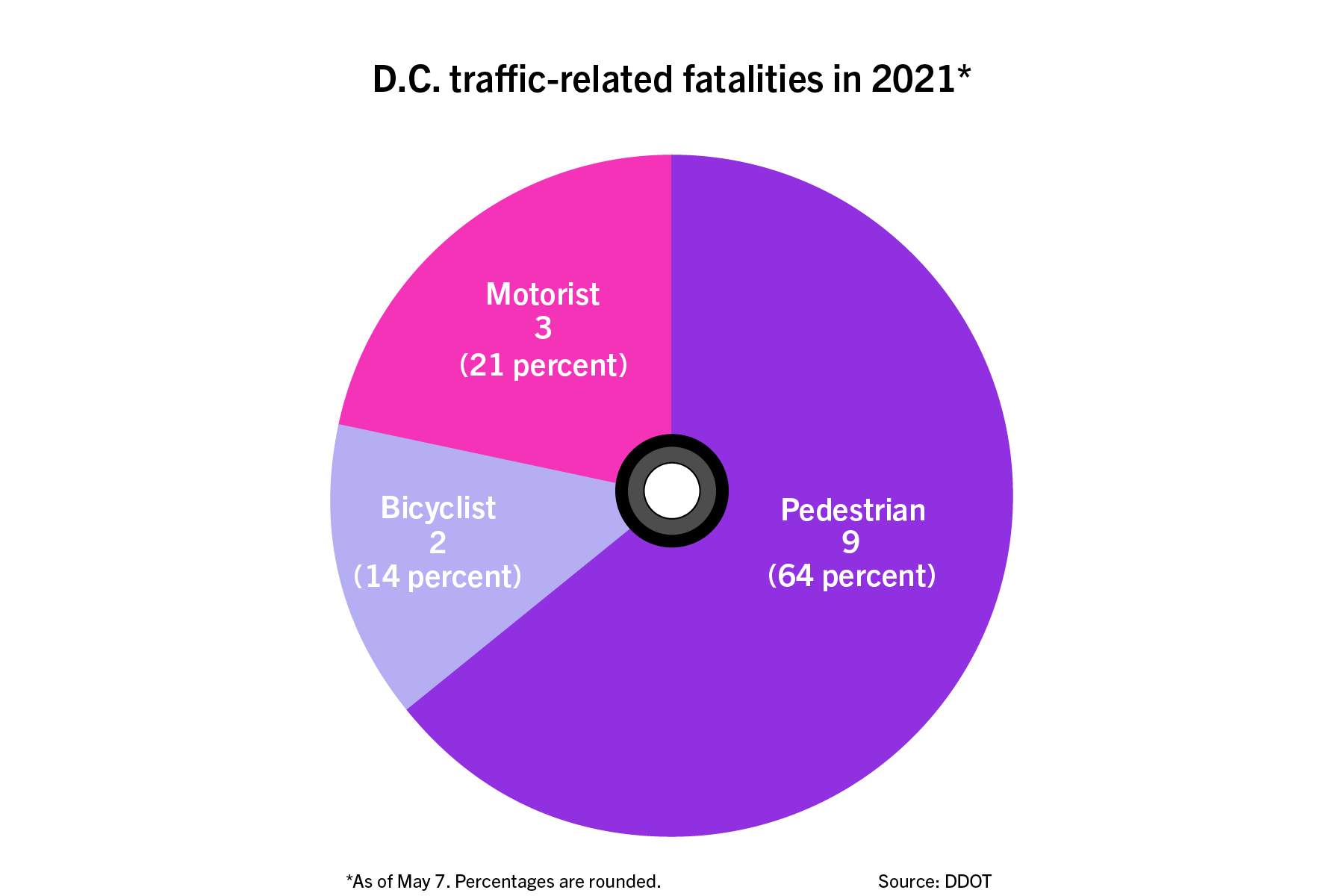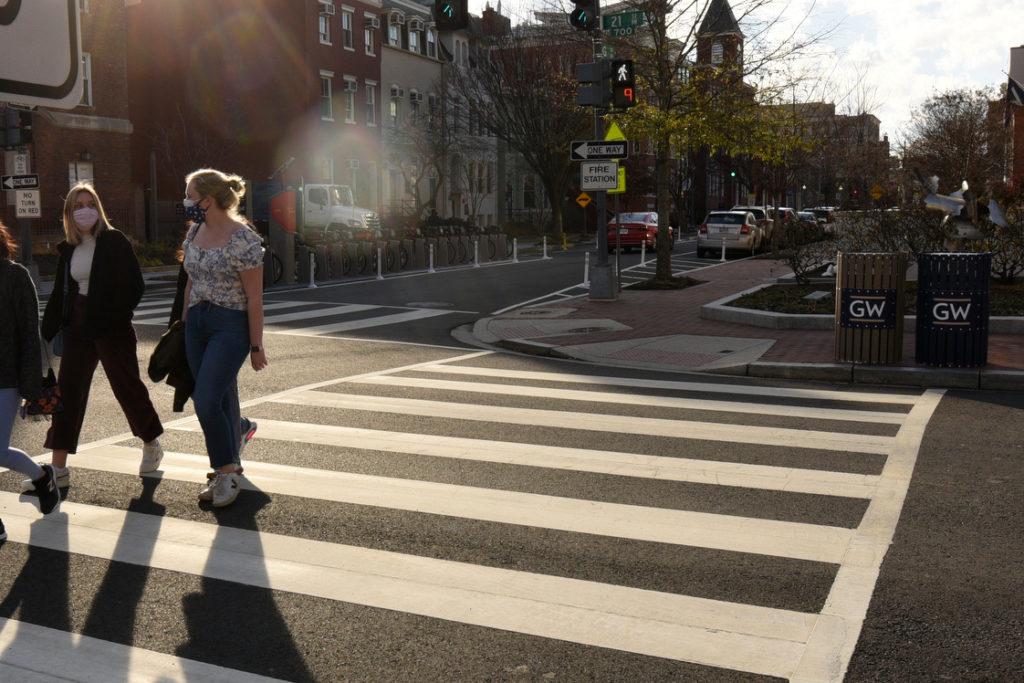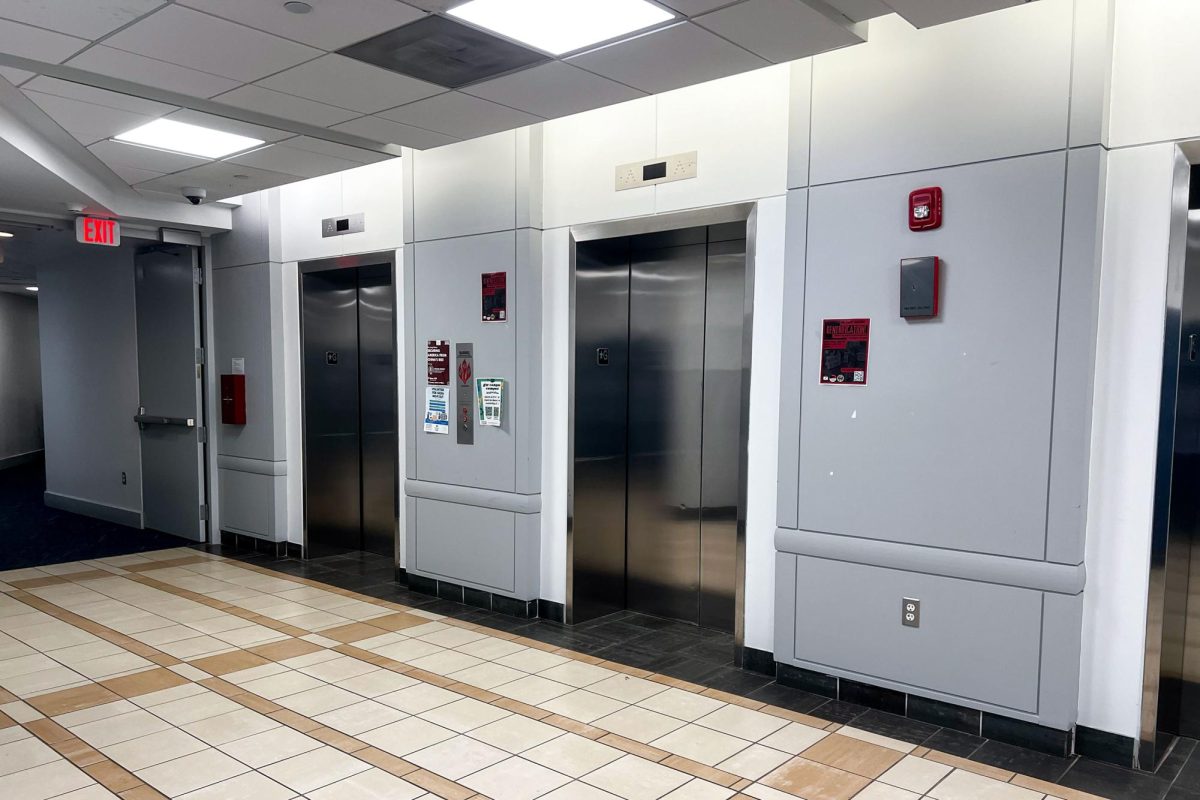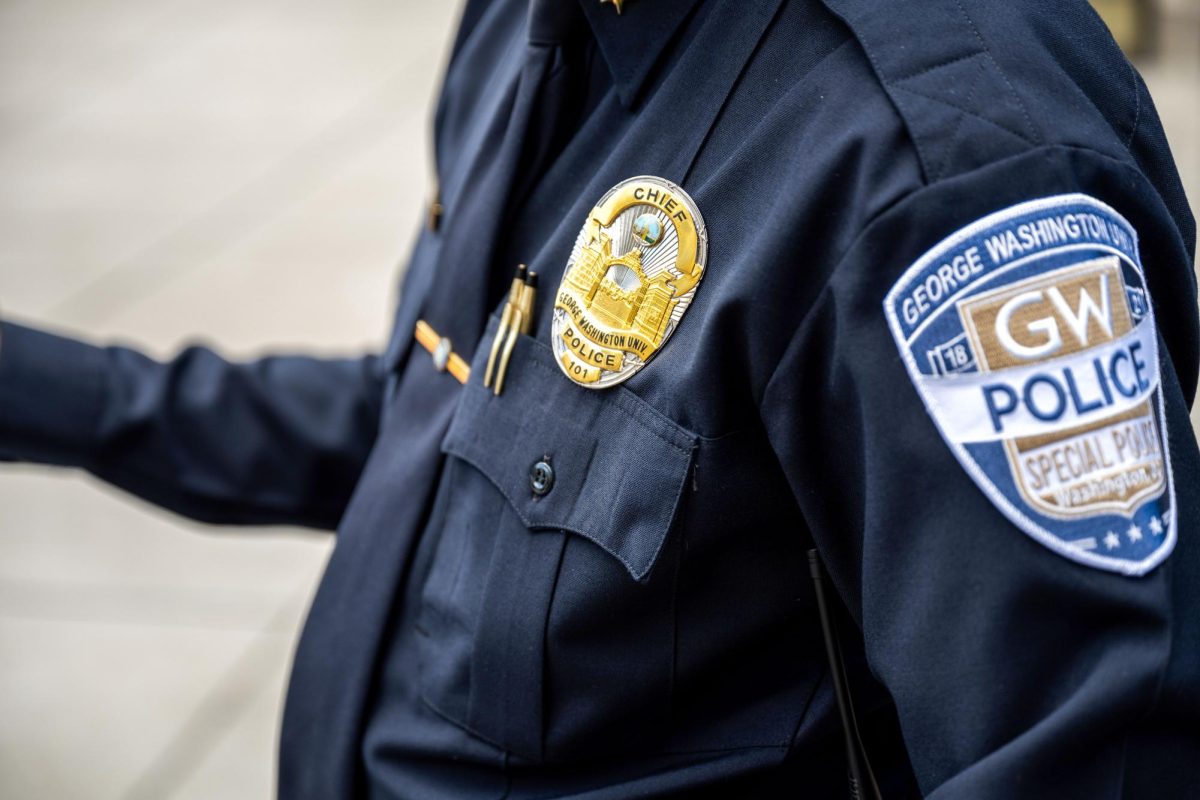Traffic fatalities in the District have nearly doubled since this time last year.
Sixteen people have been killed in traffic-related accidents so far this year, nearly double the nine deaths registered at this time last year, according to data from the Metropolitan Police Department. Local leaders said city officials should improve biking and walking infrastructure and implement tougher traffic enforcement to curb the rise in deaths.
Nine pedestrians, two cyclists and three motorists have died in accidents in the District this year, according to District Department of Transportation data, which accounts for 15 of the 16 fatalities in 2021. In one such incident, a cyclist was struck and killed by a car on Massachusetts Avenue last month just hours after tweeting about unsafe transportation infrastructure in the District.
“DDOT’s strategy to improve safety on our roadways is built around two ideals: mitigating or eliminating conflicts, mainly at intersections; and managing speeds,” DDOT Interim Director Everett Lott said in an email. “The single most important factor in crash severity is speed – which is why we ask everyone in the District to slow down, especially where pedestrians and cyclists are present.”
The District is currently on track to log about 45 traffic fatalities this year, which would be the most in D.C. since 2007 when 54 people died in traffic-related incidents according to Metropolitan Police Department data. There were 37 traffic fatalities in 2020 but just 27 in 2019, MPD data shows.

Nicholas Anastacio | Graphics Editor
One traffic fatality occurred near campus earlier this semester when a vehicle struck and killed a pedestrian who was outside of a marked crosswalk on the 1800 block of E Street in February, according to an MPD release.
A DDOT spokesperson said emptier streets this year have led to fewer crashes, and the city has seen a 40 percent decrease in minor traffic injuries in 2021 compared to 2020. But they said the number of severe high-speed crashes has increased, causing the spike in traffic deaths.
In Ward 2, which encompasses Foggy Bottom, three pedestrians and three cyclists have suffered “major” injuries in traffic incidents this year, accounting for less than 6 percent of all major injuries in the District, according to city data. At least 40 pedestrians and cyclists have also suffered minor injuries in Ward 2 this year, the data shows.
Jeri Epstein, the chair of the Foggy Bottom and West End Advisory Neighborhood Commission, said precautionary COVID-19 measures to decrease police interactions with the public have led to more relaxed speed limit enforcement within the District.
“When the city closed down last March at the start of the pandemic, they really closed down – they weren’t sending out officers to give tickets or enforcing traffic safety,” she said. “Anything that was a minor infraction was not getting a lot of attention.”
The number of traffic stops decreased in the District during the pandemic, according to MPD data. MPD officers conducted more than 385 traffic stops per day in the last five months of 2019 but only performed about 220 stops per day in 2020.
An MPD spokesperson did not return multiple requests for comment.
Epstein said the decrease in stops and the relatively empty streets that can encourage speeding could be to blame for the spike in traffic fatalities. She said when traffic congestion and law enforcement return to normal, the District may register fewer speeding accidents and deaths.
“We had a closed-down city in the pandemic and an opening city in 2021, so I think we are going to see fewer speeding-related accidents and a better environment for everybody,” she said.
Epstein added that inadequate bike lanes and unsafe sidewalks contribute to traffic incidents, and transit infrastructure needs to be revamped as biking and walking become more commonplace in the city. The ANC unanimously approved plans to construct a new bike lane along Virginia Avenue this fall, which would become the third major bike lane constructed near campus in the past year, following projects on G Street and 20th and 21st streets.
Trupti Patel, a commissioner on the ANC, said the District needs a “shift” in culture for road infrastructure like bike lanes to accommodate pedestrians and cyclists as opposed to just cars. She said D.C. residents should embrace walking and biking as the main modes of transport, similar to European cities, like Oslo, Norway, and Helsinki that track fewer traffic fatalities than American cities.
“I feel like there’s still this mindset in our city that it is constantly the biker and the pedestrian that should acquiesce to a vehicle,” she said.
Civil engineering experts with a background in traffic safety said traffic rule enforcement and safe infrastructure for all forms of transit are necessary to prevent deaths.
Kaan Ozbay, a professor of civil engineering at New York University, said better enforcement of traffic safety violations, like speed limits and dangerously aggressive driving, is “key” to preventing pedestrian and cyclist fatalities. Ozbay also said creating bike lanes, building pedestrian bridges and reducing speed limits can all improve safety for pedestrians and bicyclists.
“Most of our roads are not designed for pedestrians and bicyclists,” he said in an email. “Wide and high speed boulevards and roadways are especially not friendly to non-motorized travel.”
Ozbay said that while there is no scientific proof of what generates an increase in traffic fatalities, he has seen anecdotal reports of increased speed caused by reduced traffic causing more pedestrian fatalities.
Chris Cherry, a professor of civil engineering at the University of Tennessee, said lower traffic speeds is vital to decreasing traffic deaths. He said technology that limits scooters in the District to 10 miles per hour has been successful, and that officials should find any way to decrease car speeds, including by law enforcement.
“We know that speed is a problem,” he said. “We know that we have really good, effective ways to limit speed.”







